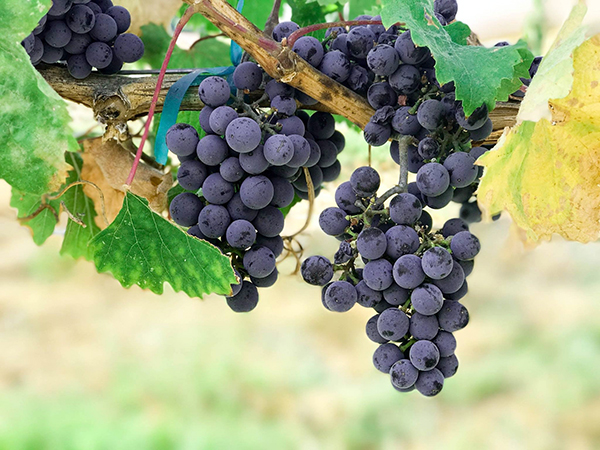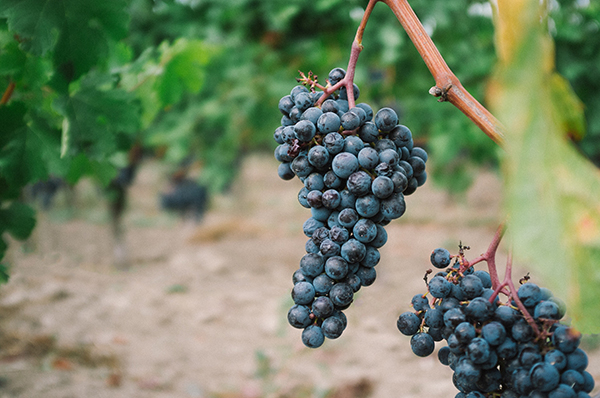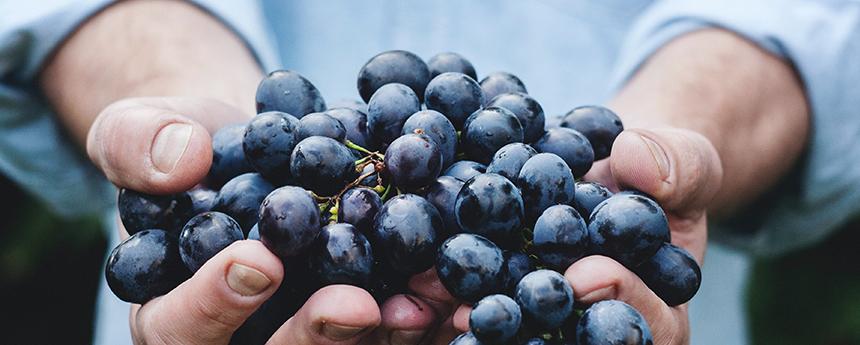- 2022-12-28
Grape Cultivation
temperature
The minimum temperature required for grape growth is about 12℃-15℃, the lowest ground temperature is about 10℃-13℃, the optimum temperature for flowering is about 20℃, and the optimum temperature for fruit expansion is 20℃-30℃. If the temperature difference between day and night is large, the coloring and sugar content are better. After the grapes sprout in spring. If the temperature rises quickly, it will easily cause the branches to grow long, which is manifested as the length of the festival is not full, and the flowering period is prone to poor fertilization. In the case of spring cold, pay attention to applying more phosphate fertilizer and high-carbon organic matter, and minimize nitrogen fertilizer.
Moisture
Grapes have high requirements for moisture, and strict control of soil moisture is a prerequisite for good grapes. Grapes require a lot of water in the early or vegetative growth period. In the later or fruiting period, the roots are weaker and require less water. Avoid damage to the roots to avoid affecting the quality. Grapes avoid rain and dew. Rainy years can easily cause insufficient sunshine and restricted photosynthesis. Excessive water absorption can easily cause branches to grow and humidity, which can easily cause various diseases, such as black pox and gray mold. Therefore, it is ideal to keep the branches at 40-70 cm during the flowering period; the irrigation amount during the fruiting period in areas prone to cracking fruits should also be controlled. In water-deficient and drought-prone areas, appropriate padding of rice straws should be used to maintain soil moisture and control the growth of grasses at the same time.

illumination
During the normal growth period, grapes must have a certain intensity of light, but when the light is too strong, especially when the grapes enter the hard-core period, sunburn is more likely to occur. At this time, bagging or plant leaves can be retained as much as possible to cover the grapes. Fruit leaves. Insufficient sunshine may cause poor corolla shedding during the flowering period and low fertilization rate; poor differentiation of flower buds during flower bud differentiation and more parthenocarpic fruits; long plants and long internodes during the growth period. No fruit or parthenocarpic fruit; disease and poor quality during fruit expansion; poor coloration at maturity and reduced sugar content.
soil
Although grapes can be cultivated in various soils (improved), loam and fine sandy loam are the best, although sandy soil has good air permeability. But the ability to retain fertilizer and water is poor. Loam is between sandy soil and clay soil. Its water and fertilizer retention capacity is strong, most of which are more fertile. When the grape grows vigorously, it is easier to flow flowers and parthenocarpic. When the high temperature and light conditions are good, the fruit is good and the yield is high. When the low temperature and sunshine are not enough, the result is not good and the yield is low; usually pay attention to drainage, avoid exploration tillage, light pruning in winter, and more pruning in summer, and spray borax, potassium dihydrogen phosphate and calcium superphosphate. Clay soil has poor air permeability, but it retains fertilizer and water better, and nutrient decomposition and absorption are slower. There is less prolongation, flow flowers and parthenocarpic phenomenon in the early stage, but it is prone to prolongation in the later stage of development. Although the ears and grains are large, the sugar content and meat quality are often not good. More high-carbon organic matter or a small amount of sand should be added to improve the acid soil. It is best to neutralize the acid soil with an appropriate amount of lime.

Nutrition
Grapes are similar to most crops. There are about 17 nutrients needed for their growth: carbon, hydrogen, oxygen, nitrogen, phosphorus, potassium, calcium, magnesium, sulfur, iron, manganese, zinc, copper, boron, molybdenum, and chlorine , Cobalt, carbon and oxygen are derived from carbon dioxide in the air during photosynthesis, and hydrogen comes from water in the soil. Except for nitrogen, most of the other elements are absorbed from the soil by the roots. Their proportional relationship is: fresh crops 94%-99.5% of the tissues are made up of the carbon, hydrogen and oxygen of air and water, while only about 0.5%-6% are nutrients from the soil. Chemical fertilizers mainly provide three elements: nitrogen, phosphorus, and potassium. Some fertilizers also contain large amounts of calcium, magnesium, and sulfur. Although the effect of using chemical fertilizers is obvious, excessive use can easily cause fertilizer damage, especially the amount of potassium fertilizer. The organic fertilizer has a low nutrient element content and can be used in large quantities, and has an improved effect on the physical, chemical, and biological properties of the soil. In addition, soil amendments can be added depending on the soil conditions. In general, strong acid soils are more likely to lack phosphorus, potassium, calcium, magnesium, silicon, molybdenum, zinc, copper, boron and other elements; alkaline or calcareous soils are more likely to lack nitrogen , Phosphorus, iron, manganese, zinc, copper and other elements. Nutritional supplements mostly adopt three methods: basal fertilizer, top dressing, and foliar fertilization. The basal fertilizer is used after hibernation or harvest. Topdressing is the use of chemical fertilizers after blooming after rain or after watering. Soils with pH values below 6.0 can be topdressed with dolomite powder or lime.




















